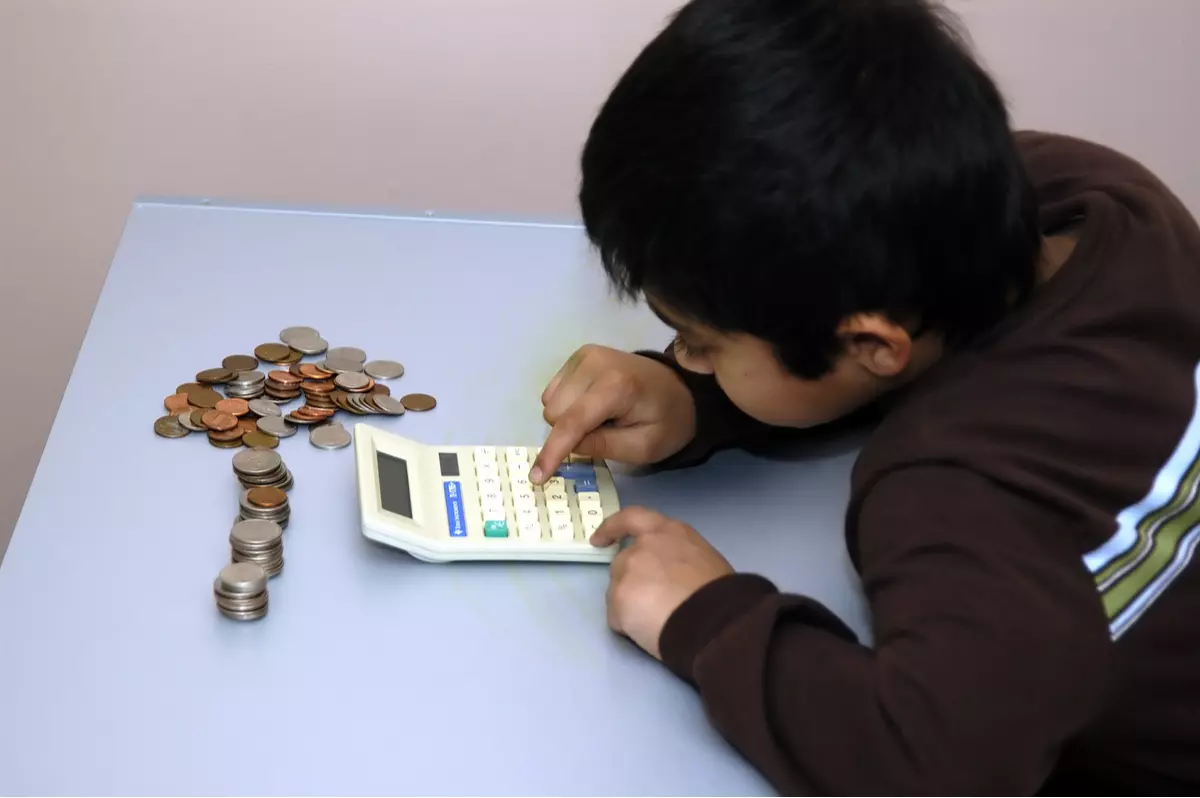Financial Literacy for Kids: A Comprehensive Guide to Teaching Essential Money Skills
Financial literacy for kids opens up a world of opportunities for them to grow into financially savvy adults. Educating children about money, while a complex task, is an enriching journey that equips them with valuable life skills. Far from being a dull endeavor, this education can be filled with fun and interactive experiences.
Our guide, focused on teaching kids about money, offers a variety of engaging activities and games designed not only to entertain but also to instill financial knowledge. Dive into these creative and enjoyable ways to teach kids about the exciting world of money, setting them up for a future where they can confidently navigate their financial landscape.
The Importance of Financial Literacy for Kids
Understanding money management for kids sets the stage for future financial success. For children, acquiring financial literacy is more than just learning about dollars and cents; it’s about developing a robust framework for making wise decisions as adults.
Here are the top benefits of teaching financial literacy to kids:
- Develops Responsible Spending Habits: When teaching kids the value of money early on, they’re more likely to develop sensible spending habits. This education helps them differentiate between wants and needs, a skill that guides better decision-making as they grow.
- Fosters Saving and Investing Mindset: Introducing concepts like saving and investing at a tender age encourages kids to think long-term. This mindset is a cornerstone for future financial stability, helping them understand the power of compound interest and delayed gratification.
- Prepares for Real-World Challenges: Navigating life involves various financial decisions, from managing student loans to budgeting for household expenses. Early financial education equips children with the tools to face these challenges confidently.
- Encourages Self-Reliance and Independence: Understanding financial basics helps children grow into self-reliant adults. This knowledge is key for their journey towards financial independence.
- Builds Critical Thinking and Problem-Solving Skills: Financial literacy is not just about money; it’s also about developing critical thinking. Kids learn to analyze options, weigh outcomes, and make informed decisions.
5 Ways to Teach Your Children About Money
In a world where financial savvy is increasingly intertwined with personal success, imparting financial literacy skills to your kids is a valuable gift. This section delves into five practical and engaging methods on how to talk to children about money.
Go Through Budgeting Activities With Kids
Budgeting is a fundamental skill, and involving your children in budgeting activities can be educational and enjoyable. Here are some practical exercises that you can do with your kids:
- Online Grocery Budgeting: Turn grocery shopping into a learning experience. Set a budget and have your child help you pick items online. They’ll learn to differentiate between necessities and extras, staying within a set limit. This activity helps them understand costs and teaches prioritization and decision-making within financial constraints.
- Baking Day Budgeting: Plan a baking day with a fixed budget. Give your child a set amount, say $10, and a list of needed ingredients. Let them choose the ingredients within the budget at the store. This exercise not only teaches them about pricing but also about making choices based on available resources.
- Party Planning with a Fictional Budget: Give your children a fictional budget to plan a party. They can list everything they would need, like decorations, snacks, and activities, and allocate the budget accordingly. This exercise helps them understand how to allocate funds for different needs and wants and the trade-offs involved in budgeting.
- Monthly Budgeting Simulation: For older children, simulate a monthly budget. Give them a fictional income and a list of expenses like rent, utilities, groceries, and entertainment. Let them allocate the income to these expenses. This can be an eye-opener to the costs of living and the importance of managing money wisely.
Learning to Save and the Basics of Investing
Teaching children about saving and investing lays the groundwork for a lifetime of wise financial habits. By understanding these concepts early on, kids gain the ability to make informed choices that lead to financial stability and growth.

If your child spends their entire allowance quickly, use it as a learning opportunity. Explain that they won’t receive more money until the next allowance day. This experience teaches them to budget their money and understand the consequences of their spending choices.
Here are some methods you can consider in how to teach your child financial responsibility:
- Guiding Children to Save Wisely: When your child has their eyes set on something that costs more than their allowance, such as a new video game or sports gear, this becomes an ideal moment for a practical lesson in savings. Encourage them to save towards it instead of directly covering the extra cost. This method teaches them about delayed gratification and planning ahead. Explain how keeping a portion of their weekly allowance can help them reach their goal. This approach addresses how to overcome financial problems by saving and instills a sense of achievement once they’ve purchased the item with their own savings.
- Introducing Basic Investment Concepts: Alongside saving, introduce simple concepts of investing. Explain how money can grow over time when saved or invested wisely. Use relatable examples, like a plant growing from a seed when nurtured, to illustrate how small savings can grow into a larger sum over time.
- Matched Savings as a Motivational Tool: Implement a “matched savings” plan. For every dollar they save, match it with a certain amount from your side, like 50 cents or another dollar. This encourages saving and simulates how interest works in a savings account. This practical approach makes the concept of financial growth more tangible and rewarding for kids.
Earning and Valuing Money
Helping children grasp the concept of earning and appreciating money equips them with practical life skills for their financial journey. This process instills a sense of responsibility and an understanding of the value of hard work, which is fundamental in managing personal finances effectively. Learning these principles early on helps children make informed decisions about saving, spending, and planning for their future financial needs.
Here are two effective strategies for kids to learn about making money responsibly and understanding its worth:
- Integrating Work with Allowance: Instead of just handing out an allowance, consider tying it to simple household chores. Tasks like cleaning their room or washing dishes can be linked to their weekly allowance, teaching children that money is earned through effort. Consistency is key here; if the chores aren’t completed, the allowance isn’t given. To motivate them further, offer additional, optional tasks for extra money. This approach teaches the value of work and the satisfaction of earning.
- Encouraging Entrepreneurial Ventures: Beyond household chores, inspire your children to use their talents to earn money. They can set up a lemonade stand, offer to mow the neighbor’s lawn, or even walk small dogs in the neighborhood. For the creatively inclined, encourage participation in craft shows and fairs or sell their handmade crafts online. These activities help them understand how money is earned and instill a sense of entrepreneurship and independence.
However, make sure that you help your kids find a healthy balance between school and their jobs. For example, you can help them plan a schedule to designate and separate study and work time. This can help build a routine, set expectations, and improve their time management skills.
Differentiate Needs vs. Wants
Helping children distinguish between needs and wants lays the foundation for sound financial decision-making. By learning this distinction, children develop the ability to prioritize their spending, focusing first on essentials before indulging in luxuries. This skill not only aids in effective budgeting but also fosters a mindset of thoughtful consumption, which is beneficial for long-term financial well-being.

Below are some strategies for parents to teach this concept effectively:
- Practical Activities to Illustrate the Difference: Start with a simple activity where you list items together and classify them as ‘needs’ (essentials for living like food and shelter) and ‘wants’ (extras that are nice to have, like toys and games). Use everyday scenarios to reinforce this lesson. For example, when grocery shopping, point out the difference between buying necessary items like bread and milk (needs) and optional snacks or treats (wants).
- Setting Budgeting Challenges: Create a game where children have a fixed amount of pretend money and must decide how to spend it on a mix of needs and wants. This helps them understand budget allocation and the importance of prioritizing necessities.
- Real-Life Applications: Involve them in family budgeting discussions. Show them how household expenses are planned and how certain items might be cut back to ensure essential needs are met first. This not only teaches them about prioritization but also about managing limited resources.
- Encouraging Reflection and Discussion: After shopping trips or spending decisions, have conversations about why certain items were chosen over others. Discussing choices helps them reflect on their decision-making process and understand the rationale behind prioritizing needs over wants.
The Joy of Giving: Teaching Kids About Charity
Introducing children to the concept of charity is a beautiful way to broaden their understanding of financial literacy, emphasizing the value of generosity and empathy. Here are some actionable ways to teach your kids about the importance and joy of giving:
- Charity Jar: Start with a simple charity jar at home. Encourage your children to contribute a small part of their allowance or earnings to this jar. Once the jar is full, let them choose a charity or cause to donate to. This hands-on approach makes the act of giving tangible and rewarding.
- Volunteering Together: Participate in community service or volunteer activities as a family. Whether helping at a local food bank or participating in a charity walk, these experiences provide children with a firsthand look at how their efforts can make a difference.
- Research and Choose Charities Together: Involve your children in the process of selecting a charity. Research different organizations together and discuss what causes they feel passionate about. This educates them about various social issues and allows them to make informed decisions about where their donations can have the most impact.
- Celebrate Giving: Acknowledge and celebrate the act of giving. Whether it’s a small donation or volunteering time, recognizing these acts reinforces the positive feelings associated with helping others and encourages a lifelong habit of giving.
- Discuss Impact: After donating or volunteering, discuss the impact of their actions. Explaining how their contributions help others fosters a deeper understanding of empathy and community responsibility.
Age-Specific Financial Literacy Education
Tailoring financial education to your child’s age ensures they receive the right information at the right time, fostering an understanding that grows with them. This section delves into age-appropriate financial literacy, offering guidance on what financial concepts to introduce at different stages of a child’s development.
Ages 5-9
At the ages of five to nine, children’s understanding of money begins to shape, making it a suitable time to introduce foundational financial concepts. Here are some effective ways to educate older elementary children and pre-teens about financial responsibility:
Introducing Allowances
Begin by setting up an allowance system. This teaches children the value of money and the effort needed to earn it. You can tie their allowance to household chores, reinforcing the idea that money is earned through work.
Optionally, offer them extra chores for additional earning opportunities, helping them understand the relationship between effort and financial reward.
Encouraging Savings With a Piggy Bank
Selecting a piggy bank can make saving exciting for younger children. It’s a visual and interactive way to teach them about setting aside money for future needs. For instance, if they want a $30 toy and receive a $10 weekly allowance, help them calculate how many weeks it will take to save enough.

This practice promotes patience and self-discipline, guiding them towards thoughtful spending rather than impulsive purchases.
Learning Through Shopping Experiences
Involve your children in grocery shopping. Let them handle cash transactions to grasp the cost of items and the value of money. This hands-on experience with cash makes the concept of spending and its impact more concrete than using a card.
It also encourages them to do mental math, linking the effort they put into earning their allowance with the cost of items they want.
Teaching Consequences and Budgeting
Discuss how they can plan better for the next week, fostering smarter financial decision-making.
Ages 10-14
As children enter their teenage years, their financial education can deepen to include more complex topics like family financial planning, understanding taxes, and responsible credit card use. Let’s explore how to guide them through these financial concepts effectively.
Budgeting and Expense Tracking
Teach your teens to create a budget and track their spending. Writing down purchases and comparing them to their earnings (from their allowance) helps them recognize spending patterns and areas where they might be overindulging. Learning to categorize expenses and allocate funds accordingly is a skill that will serve them well into adulthood.
This ability enables them to handle future financial responsibilities like managing household budgets and saving for significant goals. Moreover, it teaches them to balance needs and wants, ensuring financial stability and sound decision-making.
Introducing Financial Learning Apps
Introduce your children to educational apps that simulate real-life financial scenarios. Apps like ‘iAllowance’ or ‘Renegade Buggies’ can teach them about budgeting, saving, and smart spending in an interactive and engaging way. These apps make financial concepts relatable and easier to grasp for this age group.
Involving Kids in Family Budgeting
Involve your children in simple family budgeting exercises. Let them help plan the weekly grocery list within a budget or decide on family outings that fit the financial plan. This involvement gives them a practical understanding of everyday financial decisions and the importance of staying within a budget.
Ages 15-17
Financial education for children aged 15 to 17 becomes more about applying learned concepts to real-world situations. This age group is on the cusp of adulthood, making it an opportune time to engage in more sophisticated financial practices and planning.
Educating About Credit and Debit Cards
Clarify the differences between the different types of credit cards and debit cards, emphasizing responsible usage. Explain that debit cards use funds from checking accounts, while credit cards mean borrowing from the issuer.

Stress the importance of timely repayments to avoid late fees and credit score damage. Consider adding your child as an authorized user on your credit card or setting up a teen-friendly debit card like Greenlight Kids’ Debit Card. This will give them practical experience in managing card expenses responsibly.
Encouraging Part-Time Work
Getting a part-time job can be a practical step for teens. Jobs like babysitting, dog walking, and retail positions are among the most popular jobs for teenagers. They teach the value of hard work and the direct correlation between time worked and money earned.
This experience is invaluable in helping them understand the effort behind making money and can motivate them to start saving for future needs, such as college.
Understanding Taxes and Social Security
As your teen starts to make hard-earned money, it’s the perfect opportunity to introduce them to income taxes and Social Security. Review their pay stub to explain deductions like Social Security, Medicare, and various taxes. Discussing the purpose of these deductions provides insight into family financial planning and the real cost of employment.
Explaining Credit Reports and Scores
For college-bound teens, gaining knowledge about credit reports and scores is fundamental to their financial literacy and future credit management. Discuss how student loans and credit usage can impact their credit score. Regularly checking credit scores together can be an educational activity, helping them see the effects of their financial decisions.
Planning for College
Engage in conversations about college funding early. Discuss the financial impact of different college choices, including state versus private institutions. Explore options like government and personal student loans, and encourage research into scholarship opportunities. Work together to understand loan repayment plans, including calculating monthly payments with interest, and discuss how much college expenses they might need to contribute.
Adult Children (Ages 18 and Over)
As children transition into adulthood, their financial independence becomes more pronounced. This stage is about refining their financial skills and trusting them with greater financial responsibilities.
Managing Their Own Bank Accounts
Encourage your adult children to take full control of their bank accounts. This step allows them to handle card payments and manage finances digitally, marking a significant step in personal finance. The autonomy of managing their own money is not just a practical necessity but also a symbol of trust and responsibility.
Establishing Credit and Investment Strategies
Establishing and building credit is a big step for young adults just stepping into financial independence. As a parent, you can guide them by recommending they start with a secured credit card or a student credit card specifically designed for new users with no credit history. Explain the process of applying for these cards and the importance of using them responsibly. Discuss how regular, small purchases followed by on-time payments can gradually build a credit history.

Simultaneously, introduce them to basic investment concepts. This can start with opening a high-yield savings account or a simple index fund investment to familiarize them with the concept of earning interest or returns on their money. Encourage setting up a small, automatic transfer from their checking to a savings or investment account to cultivate the habit of regular saving and investing.
Practical Financial Skills and Parental Influence
Fostering practical financial skills in children often begins at home, with parents playing a significant role as educators and role models in financial literacy. As everyday financial mentors, parents have the unique opportunity to shape their children’s understanding and attitudes toward money.
Be a Role Model
Teaching your children about finances starts with how you handle your own. Share aspects of your financial life that you’re comfortable with, such as how you manage mortgage payments, grocery budgets, and savings for leisure activities. This transparency provides them with a realistic view of managing money.
Model Good Financial Behavior
Show your children the value of saving and spending wisely by involving them in financial decisions and actions. For instance, if you’re saving for a new gadget, share your saving plan and progress with them. This demonstrates the satisfaction of achieving a goal through disciplined saving.
Involve them in planning the family budget, allowing them to see how you allocate funds for essentials and extras. Discuss with them the importance of balancing saving for the future, like retirement, and meeting current needs. Through these interactions, they learn practical financial skills and the impact of thoughtful financial decisions.
Educational Tools for Financial Literacy
Incorporating fun and engaging methods can significantly enhance children’s learning experience in financial literacy. Games and books tailored for various ages offer interactive and enjoyable ways to grasp financial concepts.
Financial Literacy Games
Games are powerful tools for teaching financial concepts in an engaging way. Board games like Monopoly offer hands-on experience managing money, buying property, and understanding mortgages and rents.

Digital games, particularly “Tycoon”-style games available in app stores, incorporate monetary systems where players manage finances to succeed, blending entertainment with educational value.
Educational Video Games
There are specific video games designed to teach financial literacy. These games often integrate financial questions and money management directly into gameplay, providing a dynamic learning environment. They balance fun with educational content, helping children understand money management, investment basics, and economic principles.
Here are a few notable examples:
- Cash Puzzler: Aimed at young children aged three to six, Cash Puzzler is a memory puzzle game that helps children learn about U.S. currency through visualization and recognition of bills.
- Counting with Coins: This game, suitable for children aged five to 10, is offered by the U.S. Mint and focuses on teaching practical money management skills in a grocery store.
- Peter Pig’s Money Counter: Designed for children aged five to eight, this interactive game teaches about U.S. currency, including identifying, counting, and saving money.
- Financial Football: This fast-paced, interactive game engages students aged 11 to 18 in answering personal finance questions to advance in a football-themed setting.
- STAX: Suitable for high school students aged 14 to 18, STAX is an investment game that allows players to experience 20 years of investing in just a few minutes, teaching the principles of the market investment.
- Money Magic: Designed for high school students, Money Magic teaches basic budgeting principles through gameplay, balancing immediate wants with long-term plans.
- The Payoff: In this immersive game for high school students, players navigate life events and financial decisions as video bloggers.
Financial Literacy Through Books
Books are a timeless resource for learning, which holds true for financial education for kids. Nonfiction books designed as educational tools can be intriguing for children interested in understanding money. They offer clear explanations of financial concepts and practices in an accessible manner.
Here are some notable titles:
- “Albert the Octopus Accountant” by Lily Verlin introduces various money concepts for preschoolers in a fun way.
- “Money Ninja” by Mary Nhin teaches children life skills like earning, saving, and giving money.
- “Kid’s Activity Book on Money and Finance” by Allan Kunigis includes engaging activities like word searches, crossword puzzles, and quizzes about money.
- “What is Money?: Personal Finance for Kids” by Kelly Lee contains short stories about money, suitable for toddlers.
- “Investing for Teens: How To Invest and Grow Your Money!” by Alex Higgs is a step-by-step investing guide to help build a solid foundation for young adults.
- “The Everything Kids’ Money Book: Earn it, Save it, and Watch it Grow!” by Brette Sember discusses the basics of money, earning, saving, and investing.
- “Heads Up Money” by Marcus Weeks covers complicated financial and economic topics in an easy-to-follow format.
- “I Want More Pizza: Real World Money Skills For High School, College, And Beyond” by Steve Burkholder uses a pizza model to teach teens about money management.
- “Kyng & Kyren’s Generational Wealth Building Activity Book” by Kyren Gibson focuses on building generational wealth through fun and engaging activities.
- “More Money, Please: The Financial Secrets You Never Learned in School” by Scott Gamm is a personal finance crash course ideal for high-schoolers and college students.
- “Money Matters Made Easy: A Guide to Financial Literacy for Kids” by Terence Hover empowers children to make smart financial decisions, teaching them how to budget, save, and give back.
Fictional Stories with Financial Lessons
Fiction books with financial themes can also be a great resource. Stories that weave in lessons about saving, budgeting, and financial decision-making can be both entertaining and informative.

Some notable titles include:
- “Bunny Money” by Rosemary Wells is a story about bunnies Ruby and Max learning about budgeting and spending decisions.
- “The Ant and the Grasshopper” by Amy Lowry Poole is a modern version of Aesop’s fable, teaching the importance of consistent work and preparation.
- “Paddy’s Payday” by Alexandra Day focuses on an Irish Terrier named Paddy and his spending decisions after getting paid.
- “Apple Farmer Annie” by Monica Wellington introduces entrepreneurship through the story of Annie, an orchard farmer.
- “Pigs Will Be Pigs” by Amy Axelrod is a pig family’s budgeting and understanding money adventure.
- “Berenstain Bears’ Dollars and Sense” by Stan and Jan Berenstain teaches about budgeting and managing allowances.
- “Isabel’s Car Wash” by Sheila Bair is about a girl’s entrepreneurial venture to earn money.
- “Grandpa’s Fortune Fables” by Will Rainey offers fun stories that teach kids about money management and investing.
- “Reach for the Stars” by Michele Cho-Dorado and Kaori Hamura-Long tells a story about a girl named Mimi who starts a business to earn the money she needs.
Comprehensive Resources for Financial Education
In today’s digital age, a wealth of resources are available for teaching financial literacy. This section highlights key online platforms and apps that offer comprehensive financial learning for various age groups.
Online Educational Platforms
Websites like Khan Academy and Coursera offer courses in personal finance for kids, economics, and money management. These platforms provide in-depth tutorials and lessons suitable for teenagers and young adults. They cover topics from basic budgeting to more complex subjects like investing and credit management.
Interactive Financial Apps for Younger Learners
Apps such as ‘Bankaroo’ and ‘PiggyBot’ make learning about money fun and interactive for younger children. These apps offer virtual money management tools, helping kids track their allowances, set savings goals, and understand basic financial concepts in an engaging way.
Budgeting and Expense Tracking Tools
For practical experiences, apps like Mint and YNAB (You Need A Budget) are excellent for older teens. They can track their income, expenses, and savings, providing a real-life experience of managing personal finances. These tools help build responsible spending habits and understand the importance of budgeting.
Investment Simulation Games
Apps like ‘Investopedia Stock Simulator‘ offer a risk-free way to learn about investing. Users can experience buying and selling stocks in a simulated environment, which is great for young adults to understand market concepts without real financial risks.
Podcasts and YouTube Channels
Numerous podcasts and YouTube channels are dedicated to financial education, offering insights and advice in an easily digestible format. Channels like ‘The Financial Diet’ and podcasts like ‘So Money’ discuss various financial topics, from basic money management tips to advanced investment strategies.
Sum Up
Engaging in budgeting activities and understanding the value of saving and investing are significant first steps in your children’s financial education. You can introduce more complex concepts like credit management as they grow older.
By utilizing these tools and sharing your own financial experiences and practices, you empower your children with the knowledge and skills they need for future financial independence and stability. Remember, imparting financial wisdom is a gift that prepares your children for a lifetime of informed and responsible financial decisions.
Table of Contents
- The Importance of Financial Literacy for Kids
- 5 Ways to Teach Your Children About Money
- Go Through Budgeting Activities With Kids
- Learning to Save and the Basics of Investing
- Earning and Valuing Money
- Differentiate Needs vs. Wants
- The Joy of Giving: Teaching Kids About Charity
- Age-Specific Financial Literacy Education
- Ages 5-9
- Ages 10-14
- Ages 15-17
- Adult Children (Ages 18 and Over)
- Practical Financial Skills and Parental Influence
- Be a Role Model
- Model Good Financial Behavior
- Educational Tools for Financial Literacy
- Financial Literacy Games
- Educational Video Games
- Financial Literacy Through Books
- Fictional Stories with Financial Lessons
- Comprehensive Resources for Financial Education
- Online Educational Platforms
- Interactive Financial Apps for Younger Learners
- Budgeting and Expense Tracking Tools
- Investment Simulation Games
- Podcasts and YouTube Channels
- Sum Up